Image of the Day: June 2011
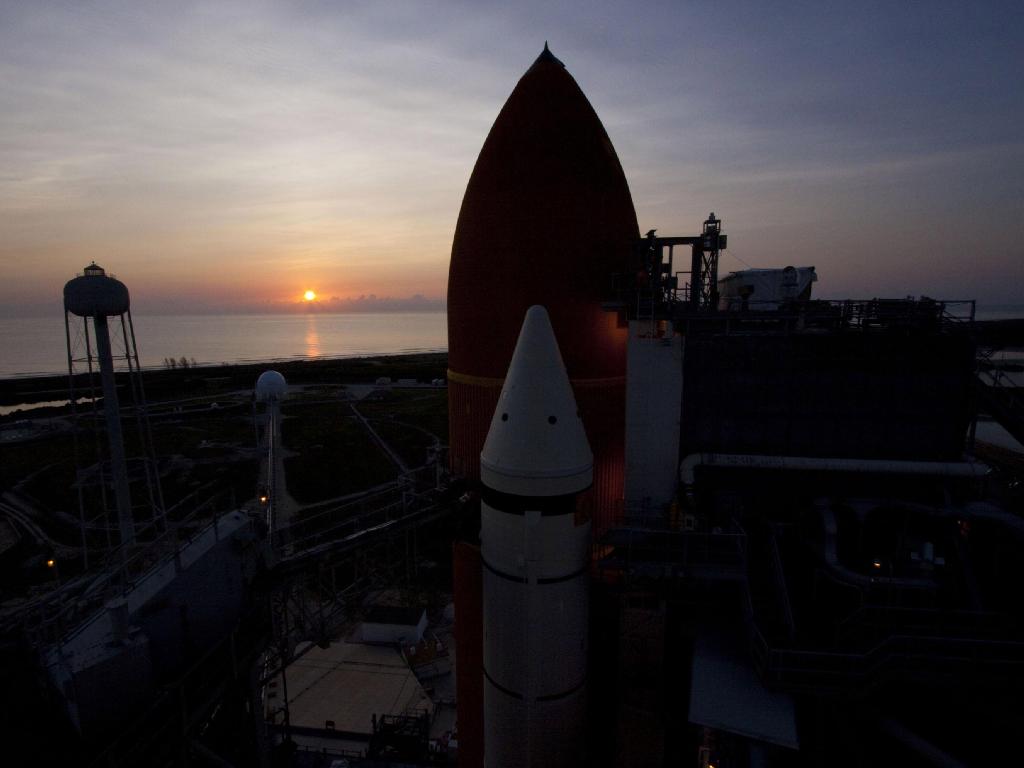
End of the Line
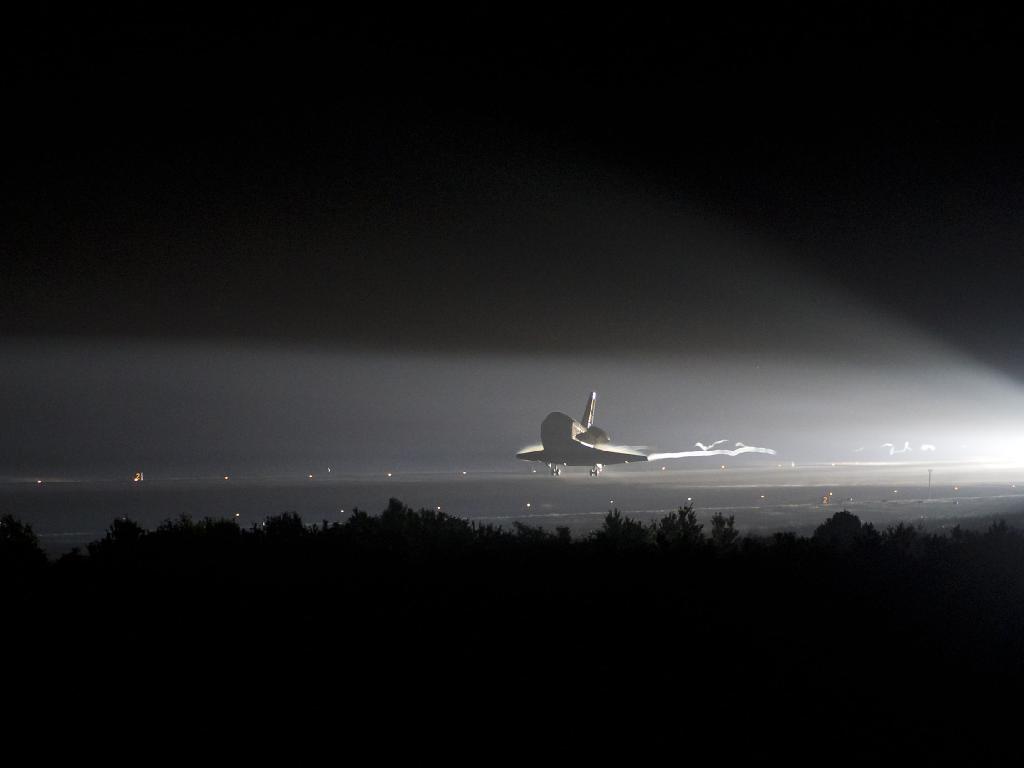
Wednesday, June 1, 2011: Space shuttle Endeavour made its final landing at Kennedy Space Center, Wednesday, June 1, 2011, in Cape Canaveral, Fla. Endeavour spent 16 days in space on the STS-134 mission outfitting the International Space Station. During 25 flights, Endeavour spent 299 days in space, and traveled more than 122.8 million miles. It first launched on May 7, 1992.
—Tom Chao
Light Fades
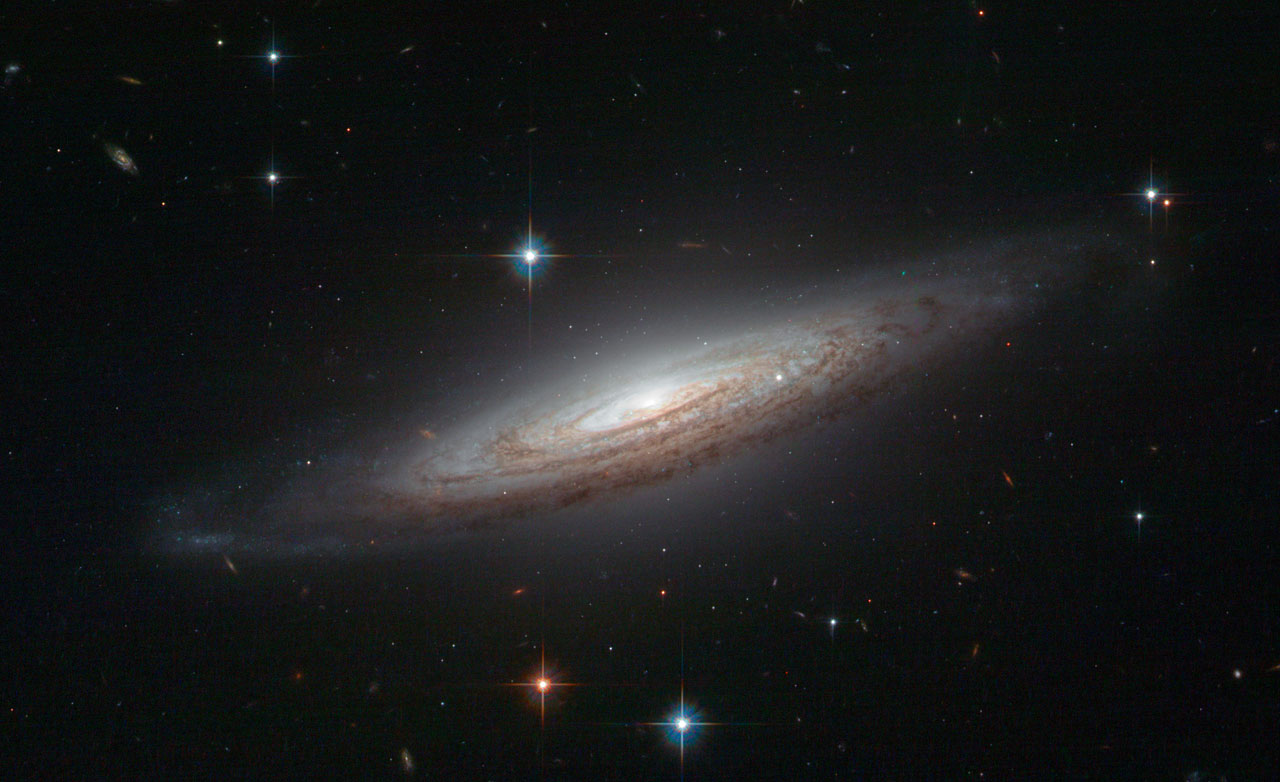
Thursday, June 2, 2011: Spiral galaxy NGC 634 appears to have a perfect spiral structure, as shown by this Hubble Space Telescope photograph. However, recently a type Ia supernova known as SN2008a was spotted in the galaxy, and it briefly rivalled the brilliance of its entire host galaxy. However, it can no longer be seen in this image, which was taken around a year and a half later.
—Tom Chao
President of the Galaxy
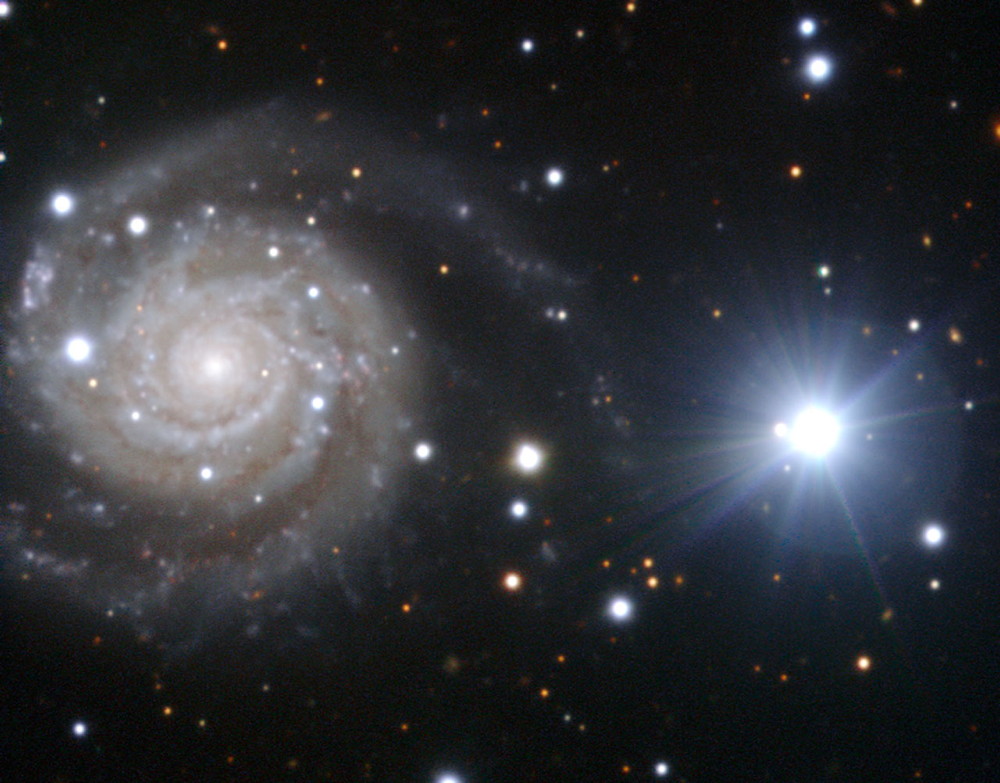
Friday, June 3, 2011: This new image of the spiral galaxy NGC 3244 was taken with the help of the President of the Czech Republic, Václav Klaus, during his visit to ESO’s Paranal Observatory on April 6, 2011. The Czech Republic joined ESO in 2007. To the right of the galaxy, an unremarkable foreground star in our own Milky Way, TYC 7713-527-1, shines brightly. The galaxy resides at a distance of about 90 million light years, while the star lies thousands of times closer within our own galaxy.
—Tom Chao
On Mercury

Monday, June 6, 2011: Mercury displays a beautiful crescent shape in this image, acquired as the MESSENGER spacecraft floated high above Mercury's southern hemisphere. On the left side, the terminator divides day from night. On the right side is the sunlit limb, separating Mercury from the darkness of space.
—Tom Chao
(Not so) Black Swan
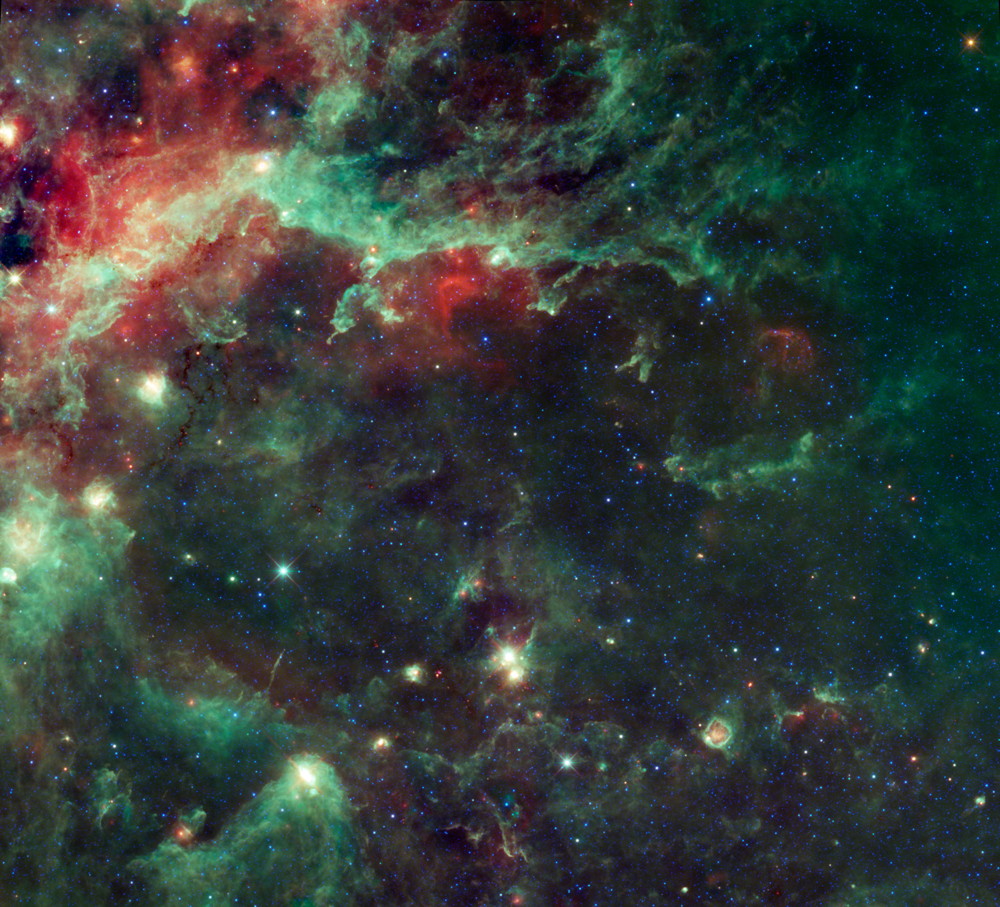
Tuesday, June 7, 2011: NASA’s Wide-field Infrared Survey Explorer, or WISE, shows a huge complex of star-forming clouds and stellar clusters found in the constellation Cygnus. Viewers can easily see the constellation Cygnus ("The Swan") in the northern hemisphere’s summertime sky. The constellation also commonly goes by the name of the Northern Cross. WISE focuses on the region surrounding the swan’s heart, revealing vast clouds of dust that light up the sky in infrared. This image covers an area of the sky almost ten times as wide as the full moon and nine times as high.
—Tom Chao
Open the Pod Bay Doors
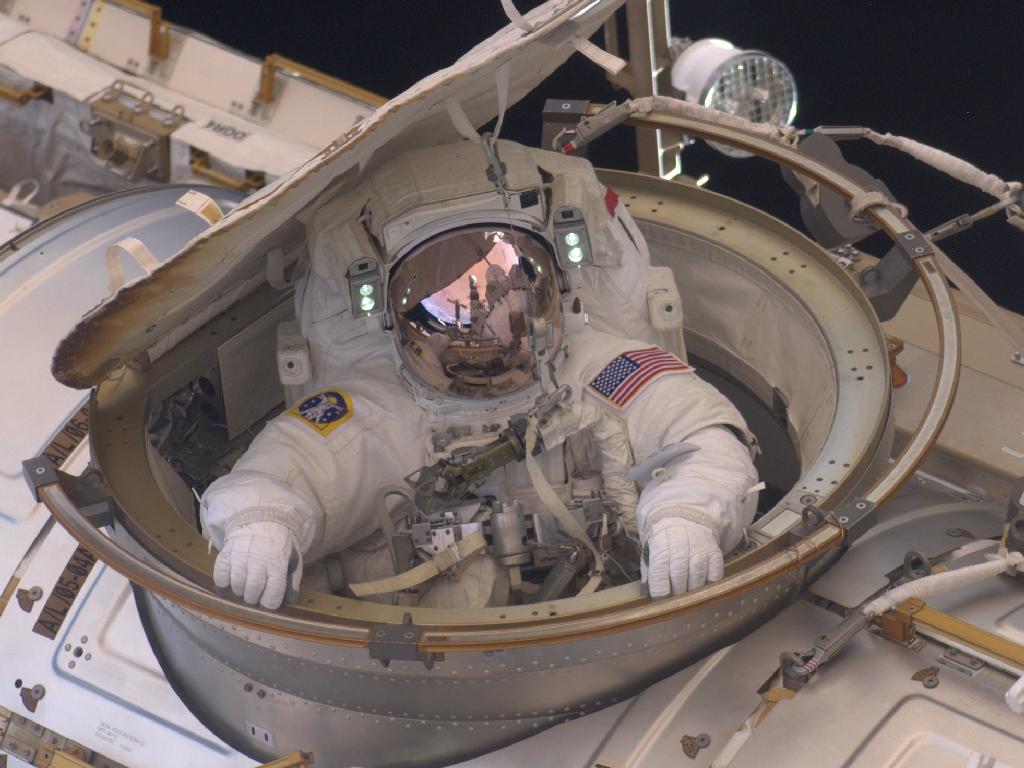
Wednesday, June 8, 2011: Astronaut Andrew Feustel reenters the International Space Station after completing an 8-hour, 7-minute spacewalk on Sunday, May 22, 2011, the second of four STS-134 mission spacewalks.
—Tom Chao
Happy Together
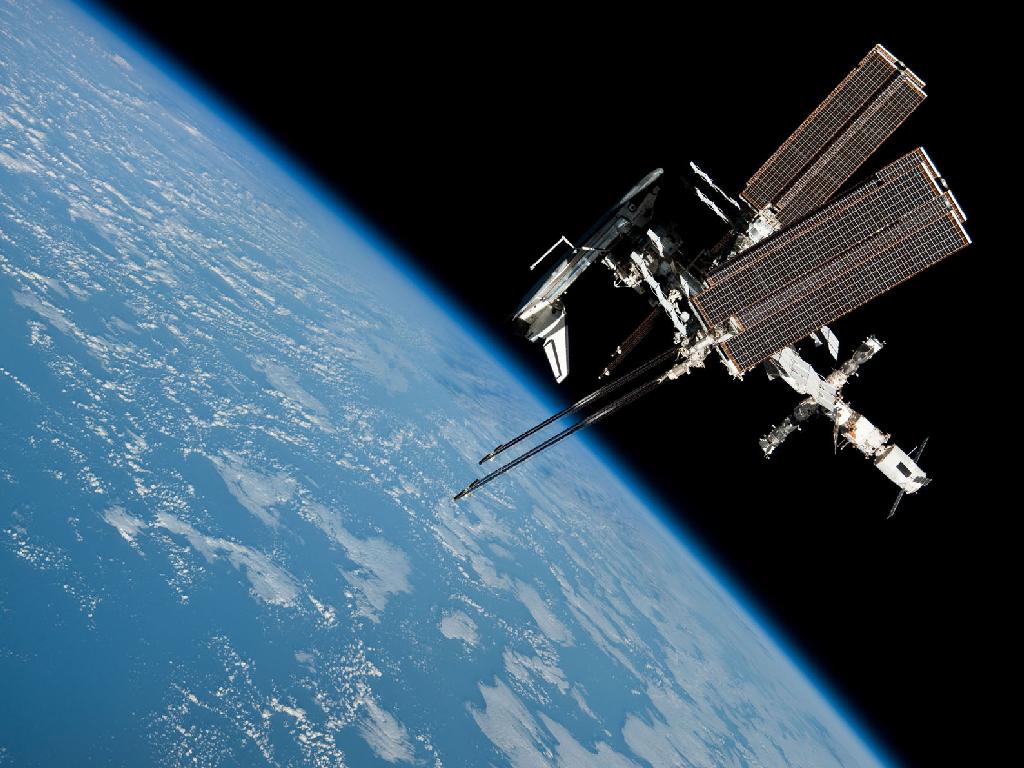
Thursday, June 9, 2011: The International Space Station floats approximately 220 miles above the Earth with space shuttle Endeavour docked to it. Expedition 27 crew member Paolo Nespoli took the photograph from the Soyuz TMA-20 spacecraft as he and two other astronauts departed the ISS on May 23, 2011 (US time). The pictures taken by Nespoli are the first taken of a shuttle docked to the International Space Station from a Russian Soyuz spacecraft.
—Tom Chao
Get the Space.com Newsletter
Breaking space news, the latest updates on rocket launches, skywatching events and more!
Blow, Winds, and Crack Your Cheeks!
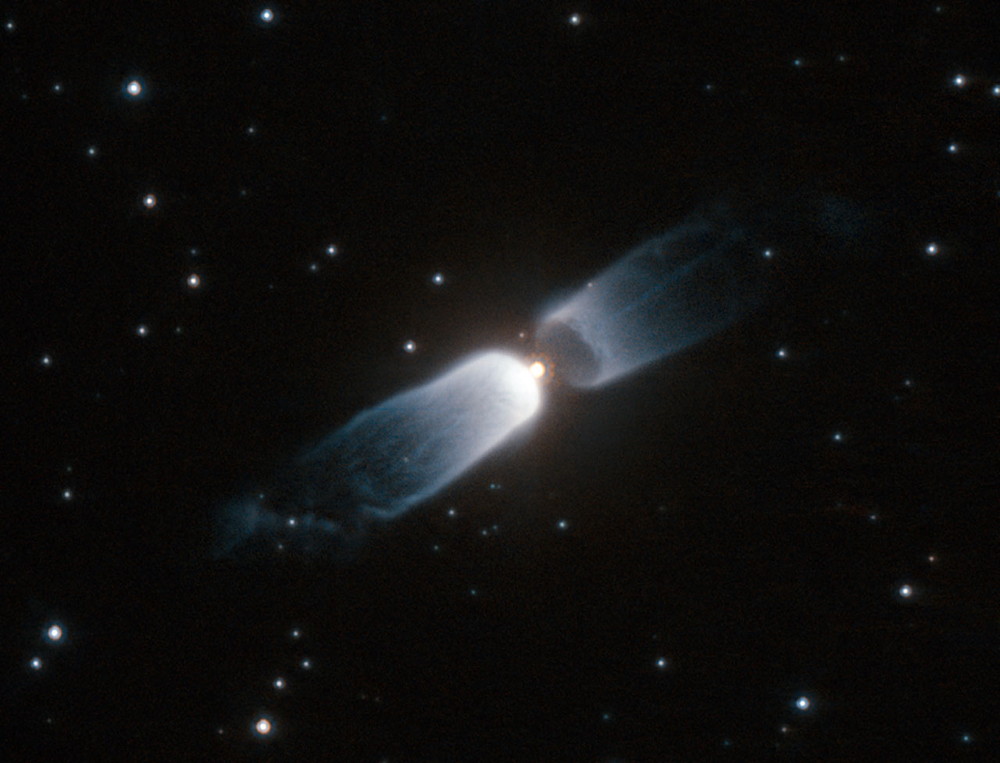
Friday, June 10, 2011: The two billowing structures of IRAS 13208-6020 formed from material shed by a central star. This phenomenon only lives briefly, and it gives astronomers an opportunity to watch the early stages of planetary nebula formation, hence the name protoplanetary, or preplanetary nebula. This object possesses a very clear bipolar form, with two very similar outflows of material in opposite directions and a dusty ring around the star. Protoplanetary nebulae do not shine, but reflect light from the central star back to us. As the star continues to evolve, it becomes hot enough to emit strong ultraviolet radiation that can ionise the surrounding gas, making it glow as a spectacular planetary nebula. Before the nebula begins to shine, winds of material ejected from the star shape the surrounding gas into intricate patterns that appear later once the nebula begins to glow.
—Tom Chao
You Can Never Hold Back Spring
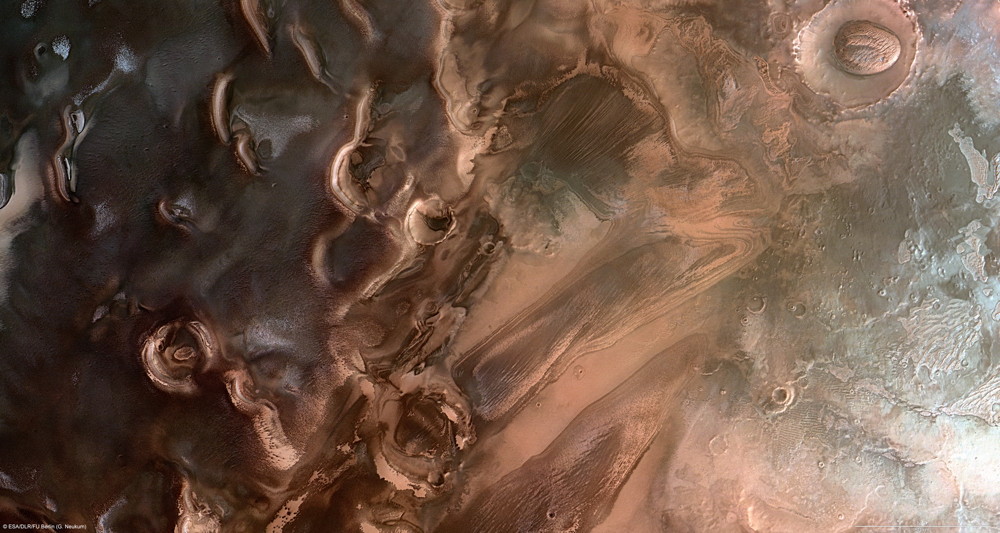
Monday, June 14, 2011: Mars Express spacecraft obtained this image of buried ice deposits in the south polar region of Mars, close to Ulyxis Rupes, on January 15, 2011, during the Martian spring, using the High Resolution Stereo Camera. South is to the left, north is to the right.
—Tom Chao
Moonlight Feels Right

Monday, June 13, 2011: This image covers about 230 degrees of the sky above ESO’s Very Large Telescope (VLT) on Cerro Paranal in the Chilean Atacama Desert. The VLT’s four Unit Telescopes appear most prominently in the foreground. Each possesses a gigantic mirror 8.2 meters across. Among the many celestial objects pictured, the moon sits at left illuminating the scene, with Jupiter as a bright dot above it. The group of stars at the top, slightly left of center, is the Pleiades.
—Tom Chao
A View from the Bridge
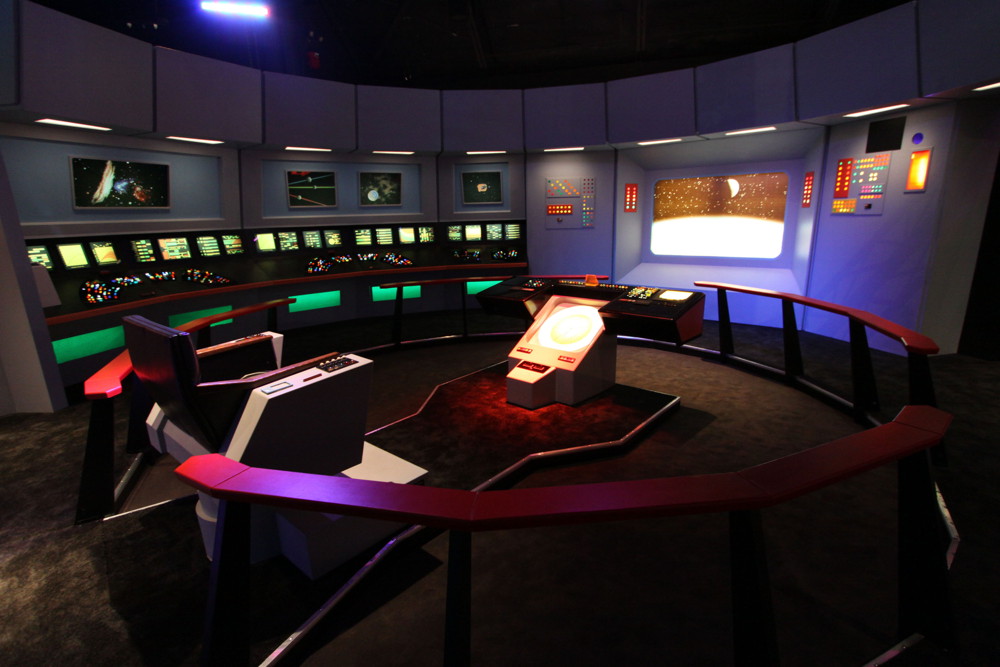
Wednesday, June 15, 2011: At NASA Kennedy Space Center's Visitor Complex, Star Trek memorabilia has gone on temporary display. "Star Trek: The Exhibition" presents a traveling exhibit of artifacts from the past 40 years of the iconic television and motion picture franchise. The exhibition features costumes, props and models, including a recreation of the U.S.S. Enterprise bridge from the original series, seen here.
—Tom Chao
Join our Space Forums to keep talking space on the latest missions, night sky and more! And if you have a news tip, correction or comment, let us know at: community@space.com.

Space.com is the premier source of space exploration, innovation and astronomy news, chronicling (and celebrating) humanity's ongoing expansion across the final frontier. Originally founded in 1999, Space.com is, and always has been, the passion of writers and editors who are space fans and also trained journalists. Our current news team consists of Editor-in-Chief Tariq Malik; Editor Hanneke Weitering, Senior Space Writer Mike Wall; Senior Writer Meghan Bartels; Senior Writer Chelsea Gohd, Senior Writer Tereza Pultarova and Staff Writer Alexander Cox, focusing on e-commerce. Senior Producer Steve Spaleta oversees our space videos, with Diana Whitcroft as our Social Media Editor.









